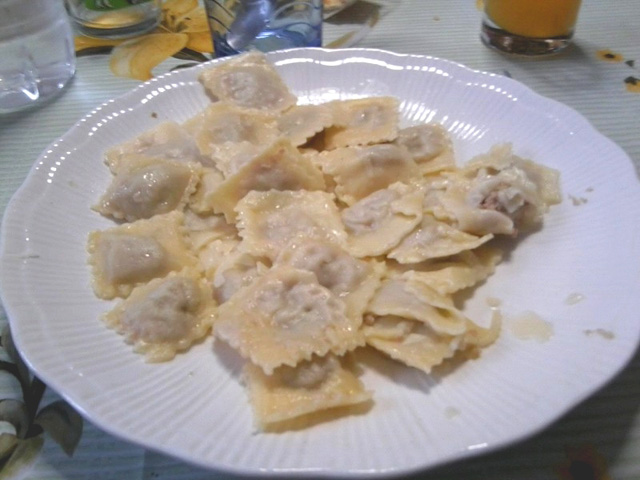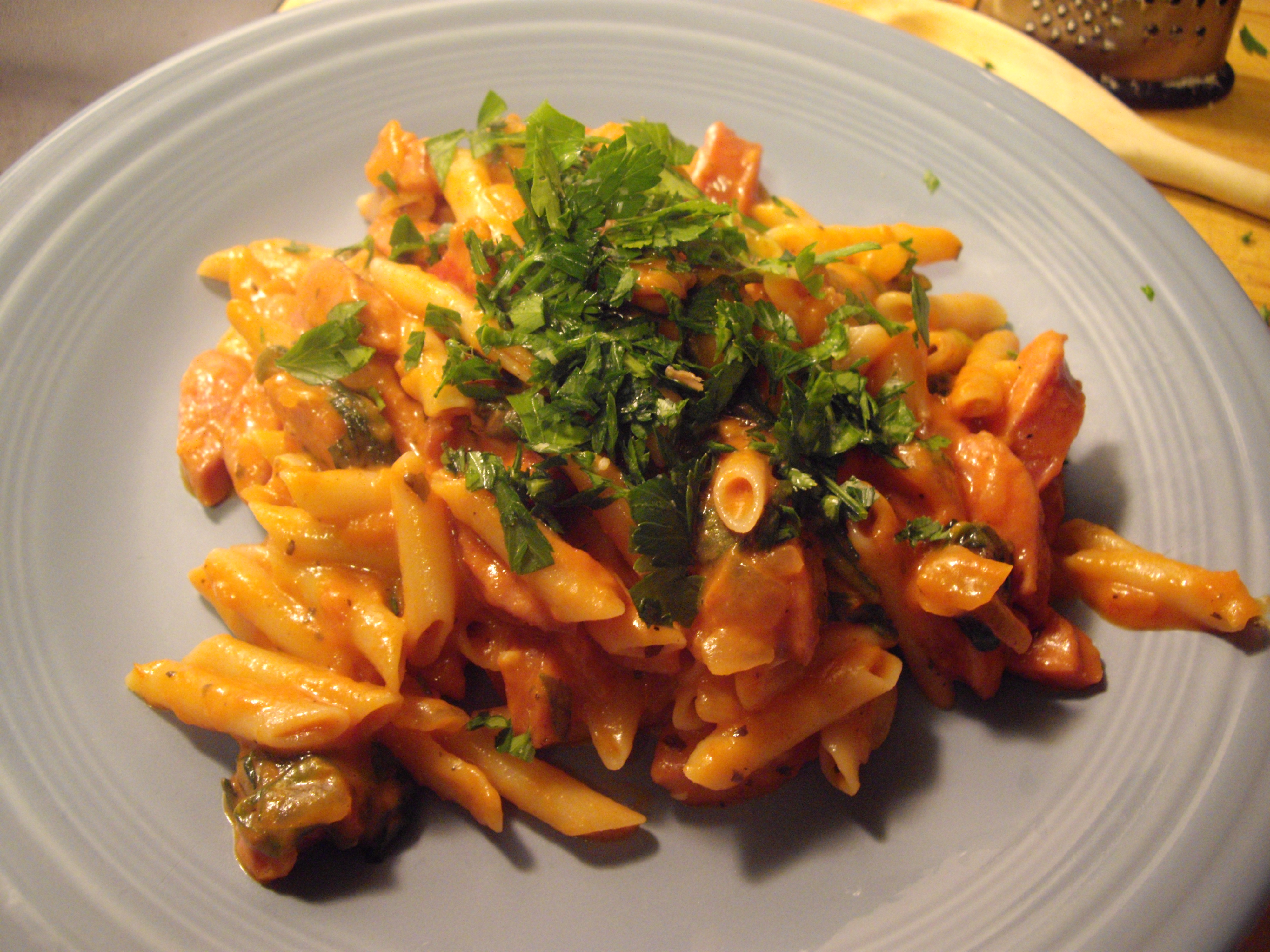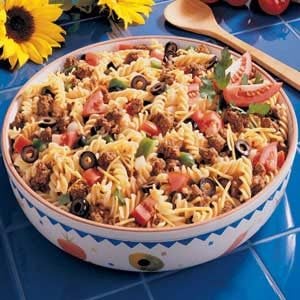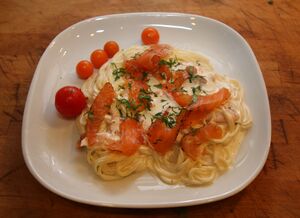Neapolitan cuisine has ancient historical roots that date back to the Greco-Roman period, which was enriched over the centuries by the influence of the different cultures that controlled Naples and its kingdoms, such as that of Aragon and France.Since Naples was the capital of the Kingdom of Naples, its cuisine took much from the culinary traditions of all the Campania region, reaching a balance between dishes based on rural ingredients (pasta, vegetables, cheese) and seafood dishes (fish, crustaceans, mollusks). A vast variety of recipes is influenced by the local aristocratic cuisine, like timballi and the sartù di riso (it), pasta or rice dishes with very elaborate preparation, while the dishes coming from the popular traditions contain poor but nutritionally healthy ingredients, like pasta e fagioli (pasta with beans) and other pasta dishes with vegetables.Naples has a history that goes back many centuries: the city itself predates many others in that area of the world, including Rome. It has endured the Greeks, Romans, the Plague, and dozens of successions of kings from France and Spain and each culture left a mark on the way food is prepared in Naples and Campania itself.Fishes in a mosaic found in Pompeii. Naples National Archaeological Museum.Fresco from Pompeii with fruit.Finding the connections between modern and Greco-Roman culinary traditions is not always easy. Among the traces of classical culinary tastes, plates from the period of Greek rule found in Magna Graecia (southern Italy) depict fishes and mollusks, an indication that seafood was appreciated during that period. Frescoes from Pompeii depict fruit baskets filled with (figs and pomegranates). An excavation at Oplontis in the Villa Poppaea shows a fresco of a cake, the ingredients of which are not yet known.Carbonized bread found in Pompeii.The Neapolitan painter Massimo Stanzione poses a woman in festive local costume (ca 1635) with a market chicken: only the rich ate chicken on an ordinary occasionLithography from an original drawing by Teodoro Duclère (1816–1869), titled"Il tavernaio".The Roman garum is the ancient sauce most similar to that used for the modern colatura d'alici (it), typical of Cetara. It can be traced back to the sweet-sour taste typical of the Roman cooking described by Apicius, along with the use of raisins in salty dishes, like the pizza di scarola (endive pie), or the braciole al ragù (meat rolls in ragù sauce). The use of wheat in the modern pastiera cake, typical of Easter, could have had originally a symbolic meaning, related to cults of Artemis, Cybele and Ceres and pagan rituals of fertility, celebrated around the Spring equinox. The name struffoli, a Christmas cake, comes from the Greek word στρόγγυλος (stróngylos, meaning "round-shaped").The Spanish and French rule in Naples initiated the difference between the cuisine of the aristocrats and that of the poorer classes. The former was characterized by elaborate, more cosmopolitan, dishes, and a greater number of expensive ingredients, including meat. The poor used foods that were cheaper and could be grown locally (that is, cereals and vegetables). These were embellished over the centuries and came into contact with the influence of the aristocratic cuisine, so that today traditional recipes of the poorer classes have often acquired great quality and taste, while preserving the original simple ingredients.One of the most famous chefs from the nobles' courts in Naples was Vincenzo Corrado (it).Giorgio Sommer (1834-1914), "Napoli - Fabbrica di maccheroni". Hand-colored photo. Catalog number: 6204.There is a great variety of Neapolitan pastas. Pasta was not invented in Naples, but one of the best grades available is found quite close by, in Gragnano, a few kilometers from the capital. It was here also that the industrial production of pasta started, with the techniques to dry and preserve it. The main ingredient is durum wheat, harder to manipulate than soft wheat, so the industrial production had greater success than in northern Italy, where home-made pasta is more popular. Traditionally in Naples pasta must be cooked "al dente", while soft pasta is not tolerated.The most popular variety of pasta, besides the classic spaghetti and linguine, are the paccheri and the ziti, long pipe-shaped pasta, broken by hand before cooking and usually topped with Neapolitan ragù. Pasta with vegetables is usually also prepared with pasta mista (pasta ammescata in Neapolitan language), which is now produced industrially as a distinct variety of pasta, but which was once sold cheaply, made up of broken pieces of different kinds of pasta.Hand-made gnocchi, prepared with flour and potatoes, have become a popular method of overcoming the Neapolitan disdain for potatoes. In 1949 W. H. Auden wrote Igor Stravinsky from Forio in Ischia, "Forio thinks us crazy because we eat potatoes, which are to them a mark of abject poverty." In reporting this, Francis Steegmuller, a longtime resident of Naples, remarks on the French-inspired gattò, in which "the potato complement is nearly overwhelmed by cheese, ham and other ingredients". Some of the more modern varieties of pasta, like the Scialatelli, are also becoming popular,Tomato variety used for the piennoloTomatoes entered the Neapolitan cuisine during the 18th century. The industry of preserving tomatoes originated in 19th-century Naples, resulting in the export to all parts of the world of the famous "pelati" (peeled tomatoes) and the "concentrato" (concentrated tomato juice). There are traditionally several ways of preparing home-made tomato preserves, either bottled tomato juice, or chopped into pieces. The famous "conserva" (sun dried concentrated juice) tomato is cooked for a long time and becomes a dark red cream with a velvety texture.Some of Campanian dishes using vegetables, like the parmigiana di melanzane (aubergine pie) or peperoni ripieni (stuffed peppers) can become real stars of the table. Some of the most typical products are friarielli (a local variety of Brassica rapa), Cichorium endivia, smooth or curly (two varieties of endive), several types of broccoli, verza (Savoy cabbage, a variety of Brassica oleracea sabauda (it)) and others, used to prepare the minestra maritata. Different types of beans, chickpeas and other legumes are very popular.Zucchini are widely used; the largest ones are fried with vinegar and fresh mint (a scapece). The male flowers of zucchini can be fried in a salty dough (sciurilli (it)).Regular red and yellow peppers are widely used, and a local variety of small green peppers (not spicy), peperoncini verdi, are usually fried.Salad is a side dish of many dishes, especially seafood ones. Lettuce, and more often the incappucciata (a local variety of the iceberg lettuce), more crispy, is mixed with carrots, fennel, rucola (some time ago it spontaneously grew in landfields, and was sold in the streets together with the less noble pucchiacchella), radishes, traditionally the long and spicy ones, which today are more and more rare, almost completely replaced by the round and sweeter ones.
lack olives used in Neapolitan cooking are always the ones from Gaeta.During the Second World War, it was not rare, in the poorest families, to use less appealing ingredients. Recipes have been reported of pasta cooked with empty pods of fava beans or peas.Mozzarella di bufala.Cheeses, both soft and aged, are an important part of the Italian diet and also have their place in Neapolitan cooking: some recipes are descended from very old Roman traditions. Starting from the freshest ones, the most used are:the ricotta di fuscella (it), very fresh and light, was originally sold in hand-made baskets. Commonly found now as a filling for certain pastas.the ricotta fresca, eaten both fresh, and as side ingredient (for instance, on top of pasta with Neapolitan ragùthe Ricotta secca (it), salty, slightly aged, typical of the Easter periodthe caciottella fresca, of Sorrento's peninsula, with very delicate tastethe mozzarella di bufala, fresh cheese made with buffalo's milk, produced mostly on the region of Aversa and in the plain of Sele river.the fiordilatte, similar to mozzarella, but made with cow's milk; it is best produced in the region of Agerola the provola affumicata, a fiordilatte with scent of oak wood smoke, light brown on the exterior, more yellowish inside
the bocconcini del cardinale, or burrielli, small mozzarellas, preserved in clay pots, flooded into cream or milk
Iitalian Pasta Recipes Recipe Of Pasta In Urdu By Chef Zakir In Hindi Salad With White Sauce In Urdu In Indian Style In Red Sauce Photos
Iitalian Pasta Recipes Recipe Of Pasta In Urdu By Chef Zakir In Hindi Salad With White Sauce In Urdu In Indian Style In Red Sauce Photos
Iitalian Pasta Recipes Recipe Of Pasta In Urdu By Chef Zakir In Hindi Salad With White Sauce In Urdu In Indian Style In Red Sauce Photos
Iitalian Pasta Recipes Recipe Of Pasta In Urdu By Chef Zakir In Hindi Salad With White Sauce In Urdu In Indian Style In Red Sauce Photos
Iitalian Pasta Recipes Recipe Of Pasta In Urdu By Chef Zakir In Hindi Salad With White Sauce In Urdu In Indian Style In Red Sauce Photos
Iitalian Pasta Recipes Recipe Of Pasta In Urdu By Chef Zakir In Hindi Salad With White Sauce In Urdu In Indian Style In Red Sauce Photos
Iitalian Pasta Recipes Recipe Of Pasta In Urdu By Chef Zakir In Hindi Salad With White Sauce In Urdu In Indian Style In Red Sauce Photos
Iitalian Pasta Recipes Recipe Of Pasta In Urdu By Chef Zakir In Hindi Salad With White Sauce In Urdu In Indian Style In Red Sauce Photos
Iitalian Pasta Recipes Recipe Of Pasta In Urdu By Chef Zakir In Hindi Salad With White Sauce In Urdu In Indian Style In Red Sauce Photos
Iitalian Pasta Recipes Recipe Of Pasta In Urdu By Chef Zakir In Hindi Salad With White Sauce In Urdu In Indian Style In Red Sauce Photos
Iitalian Pasta Recipes Recipe Of Pasta In Urdu By Chef Zakir In Hindi Salad With White Sauce In Urdu In Indian Style In Red Sauce Photos








No comments:
Post a Comment